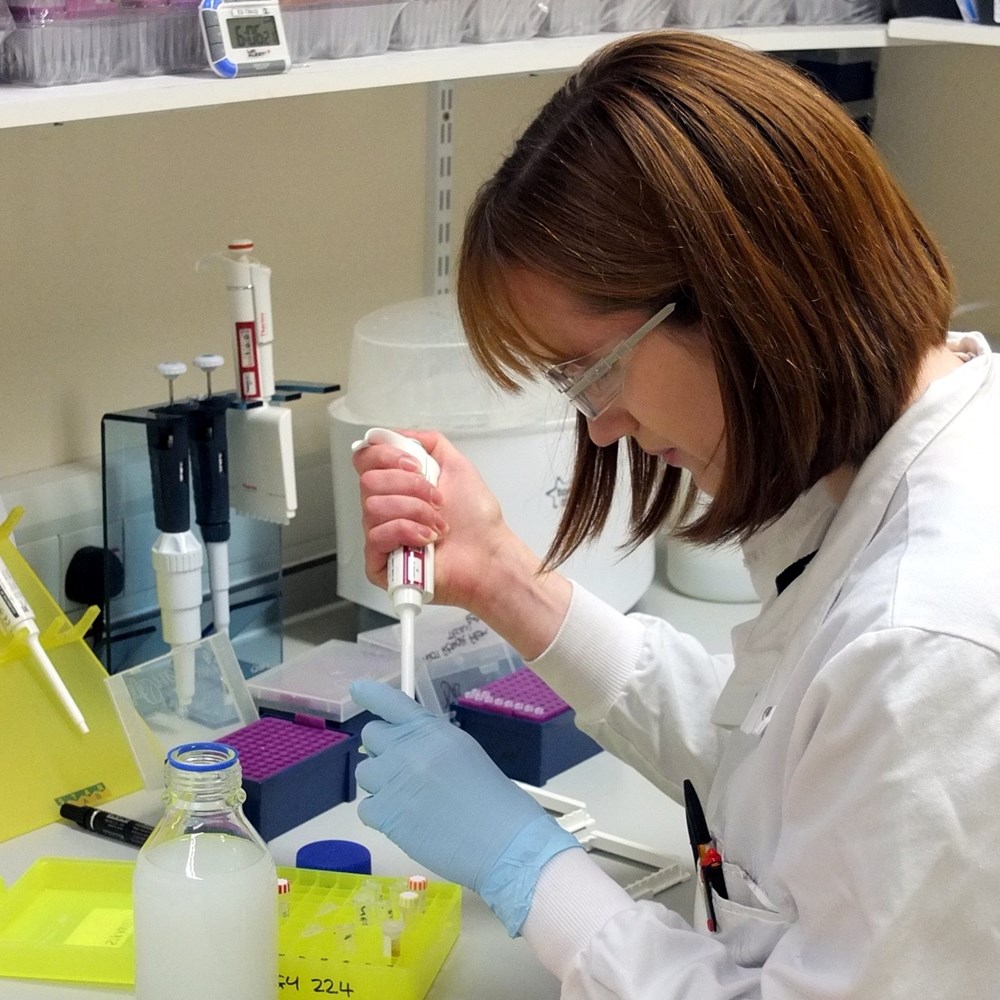About cattle diseases

Bovine viral diarrhoea (BVD)
BVD is a highly contagious viral disease of cattle, closely related to the viruses that cause classical swine fever in pigs and border disease in sheep. It is one of the most costly cattle diseases in the world, causing a variety of illnesses that can result in death. Estimated losses in a beef herd can be as much as £45,000 over a ten year period while these losses are even higher in Dairy herds.
Infection in pregnant animals can result in abortion, the birth of stunted or deformed calves and calves born with persistent infection (PI). Infection during the first third of pregnancy can compromise the development of the foetal immune system and the calf will be unable to eliminate the virus. PIs often appear normal but always shed virus throughout their lives. Many develop a fatal enteritis known as mucosal disease before they reach maturity. However, significant numbers of PIs survive well into adulthood. If a PI animal comes into contact with breeding cows, the cycle of infection continues with the creation of more PIs. Avoiding infection of the unborn calf and the detection and removal of PI calves from the herd are critical to the control and eradication of BVD in cattle.
The BVD virus can also cause enteritis during acute or transient infection, which is usually mild but occasionally severe enough to kill even adult cows. Transient BVD virus infection can cause immune-suppression leading to the pneumonia complex in calves. Semen from transiently infected bulls can also spread infection.
Nose to nose contact and contaminated needles and equipment can spread this highly contagious virus from animal to animal and herd to herd. Theoretically other ruminant species, such as sheep and deer, can be a source of infection for cattle, although sheep are at greater risk from cattle than vice versa. Careful herd health security and quarantine are an essential part of control, alongside testing. Vaccination may also be used in the course of an eradication programme.
You can download our BVD overview for more information.
Johne’s disease
Johne's disease causes adult cattle to waste and die. The disease has a long incubation period, so clinical signs of diarrhoea and weight loss don’t usually occur until cattle are over two years old. In heavily infected herds there is often a high cull rate in 3-5 year-old cattle. The bacterium that causes Johne's disease (Mycobacterium avium subspecies paratuberculosis, abbreviated to MAP) has been linked to the human disease of the bowel, Crohn’s disease. While no direct link between the two diseases has yet been shown to exist, both the Food Standards Agency and DEFRA advise the dairy industry to take precautionary measures to minimise the number of Johne’s disease organisms entering milk.
MAP is shed in large numbers in faeces and can be found in colostrum and milk. Animals are infected by ingesting MAP, and calves are most susceptible to infection. MAP infection is usually introduced to a herd by purchasing infected breeding stocky, including bulls. Semen can be infected in the later stages of the disease but it is a low risk for disease transmission.
MAP can survive in the environment for prolonged periods, so co-grazing with other ruminants is not recommended. Because rabbits can also be infected, a whole farm approach to control is required.
Animals can test negative for several years before testing positive, so control and eradication is usually a lengthy procedure. Vaccination will not remove the infection from the herd and is not recommended for herds testing for Johne’s, because there is no discrimination between the vaccine and the actual disease.
You can read our Health Schemes Blog and download the Johne's disease overview for more information.
Leptospirosis
Leptospirosis is a cattle disease caused by the bacteria Leptospira hardjo. It is associated with infertility, abortion, milk drop and the birth of weak unviable calves. It is also an important zoonotic disease and infection in humans can result in severe flu-like symptoms. The major source of infection is infected carrier cattle, which intermittently excrete bacteria in their urine. The disease is nearly always introduced into the herd by the purchase of infected cattle but infection can also be introduced by contaminated water supplies. The L. hardjo bacteria can be maintained in sheep and, although it does not directly affect sheep, they can infect cattle.
Confirmation of infection in premature or stillborn calves is difficult but evidence of infection can be done by sampling the cows using the ELISA test to detect antibody in the blood or milk. Some cows only test positive for a short time after infection and other types of Leptospira organisms can infect cattle and result in a positive blood test while causing no disease. Therefore, a test and cull policy is not a reliable option. However, where testing in a herd shows no evidence of disease, breeding stock from a herd can be considered free of infection and can be purchased safely.
It is for this reason that some herds may wish to pursue accreditation of freedom from disease or monitor for the presence of disease. Where a herd test shows evidence of infection some owners may wish to enter a monitoring programme to help them manage the disease. Alternative options for a herd with evidence of active infection include vaccination and medication.
You can download our Leptospirosis overview for more information.
Infectious bovine rhinotracheitis (IBR)
IBR is caused by Bovine Herpes Virus 1 that can affect the upper respiratory tract and can lead to fatal pneumonia. In adult cows the disease is associated with a severe and prolonged drop in milk yield, reduced fertility and abortion. An animal is permanently infected with the virus which can become reactivated and released at times of stress. IBR can be introduced to the herd by the purchase of infected carrier animals.
The virus is shed from the respiratory tract through coughing and nasal discharges and can be spread across boundary fences by contact with infected cattle. It can also be spread in the semen of infected bulls. IBR is a barrier to the export of live cattle to other European countries where the disease has already been eradicated.
Vaccination can be used to effectively control the disease. Marker vaccine is available for accredited herds, so that the tests used for the testing programme can differentiate between the vaccine and actual disease.
You can download our IBR overview for more information.
Neospora
Neospora caninum is a parasite that infects cattle and can cause abortion. It is the most frequently diagnosed cause of abortion of cattle in the UK. Infection can arrive on farm via the purchase of an infected cow or via recently infected dogs. Cattle can become infected by eating Neospora oocysts (eggs) from feed or water contaminated by infected dog faeces. Infected cattle can then pass the parasite to their unborn offspring through the placenta (vertical transmission).
Dogs are a vital part of the Neospora story. They become infected by eating Neospora infected placentae, foetuses, calves or wildlife. The parasite multiplies in their intestine and oocysts are passed in faeces for two to three weeks. After this the dog is immune and no longer a risk. As oocysts are only shed when the dog is infected for the first time this is most likely to occur in pups or young dogs. The oocysts are thought to survive in the environment for many months. After being eaten by a cow the oocysts multiply and then become dormant within tissue cysts. This has no ill effects on the cow, which continues to appear healthy. The danger comes during pregnancy, when the parasite re-activates and travels to the placenta and unborn calf.
Results can be abortion (abortion storms can occur when infection is introduced to a herd for the first time) or the birth of a healthy, but infected calf, which may go on to abort during its first pregnancy. A less common result is the birth of a calf showing signs of nervous disease. Infected cows remain infected for life and maintain Neospora in the herd by giving birth to infected heifer replacements. There is no evidence of direct cow to cow spread.
You can download our Neospora overview for more information.
Find out more about our services

Vet & laboratory services
Our leading experts provide support to clients in areas animal disease, diagnosis and surveillance.

Contact vet & laboratory services
Contact our team and benefit from their experience and expertise.

SAC Consulting
Our consultants in 25 offices across Scotland and northern England turn research into advice and advantage for business and public sector alike.

